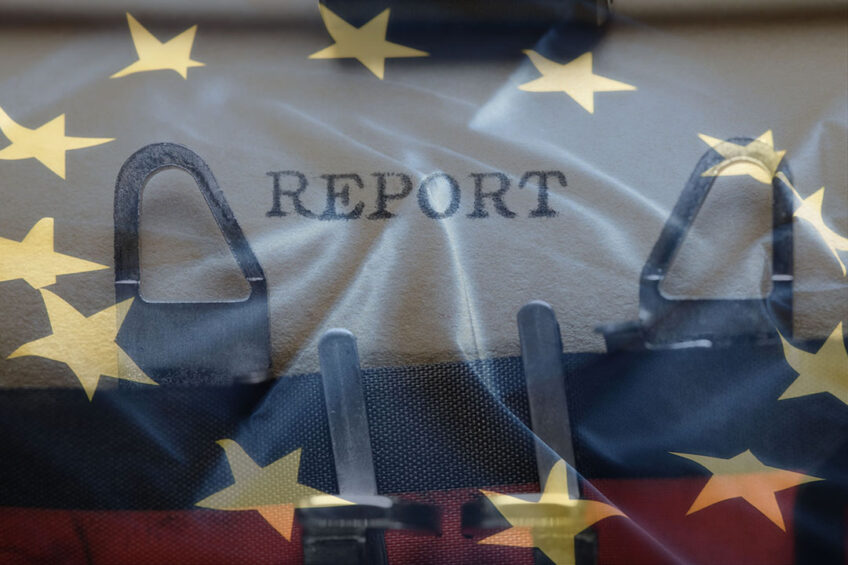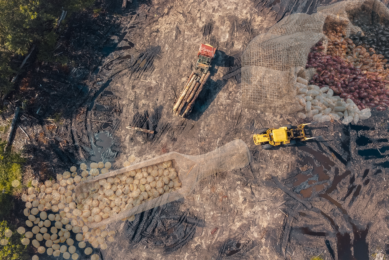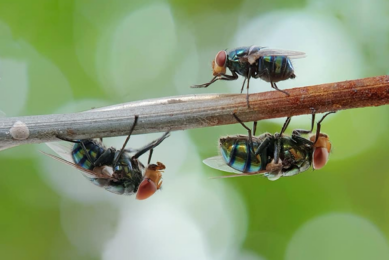Alternative protein sources for food and feed: European Parliament report

Alternative proteins are of increasing interest due to their potential to improve food security and reduce the environmental impacts of food and feed production. The study, undertaken for the EU’s Panel for the Future of Science and Technology, assessed the current state and future prospects of protein production globally and the EU to 2050.
The study focused on conventional and alternative protein sources for food and feed in the light of projections that show increased conventional protein needs up to 2050 and the fact that climate change necessitates exploring non-linear scenarios and the balance of alternative proteins in the global and EU protein mix.
4 alternative proteins
The research, produced by Arcadia International EEIG, looked at 4 alternative proteins – algae, insects, microbial fermentation and cultured meat – comparing them to the conventional sources they may replace, in terms of their relative energy needs, environmental impacts, nutritional content, and their potential for being used as substitutes to conventional proteins in food and feed in the EU. The current level of research and development into the 4 alternatives was also explored, along with the technological and commercial readiness and industrial capacity.
Obstacles & opportunities for development
The study also explored the regulatory and technical obstacles to and opportunities for development of the alternative proteins that could be considered by EU policymakers for targeted support to the growth of the sector.
Globally, most dietary protein is plant-based (57%) followed by animal-derived sources but this switches when looking at European dietary protein (55-60% from animal sources). The total alternative proteins consumed in 2020 (including plant-based alternatives) were 13 million metric tonnes or approximately 2% of the animal protein market. The exact contribution from algae, insects, microbially fermented products and culture meat is unknown but estimated to be a small fraction of the total.
Protein sources for animal feed
The sources of protein used in animal feed are both non-edible, such as grass, and edible for humans (grains and pulses). The EU is almost 80% self-sufficient for feed protein sources and has an ample supply of roughage, which is the primary feed protein source, but lower in proteins. But, the EU only produces a quarter of high protein oilseed meals which account for 27% of total feed protein in the EU. This feed protein deficit has been a key argument for reconsidering EU feed protein sources in recent years.
Environmental impact of current proteins
The environmental impact of the current protein balance, especially the production of animal-based proteins, is substantial. Globally, over 3/4 of agricultural land and approximately 2/3 of farming greenhouse gases are associated with animal-based foods. Climate change poses additional risks to the current protein balance.
Looking ahead to 2050, the report feels conventional protein consumption is expected to rise by 57% for meat and 48% for dairy, assuming economic growth and increasing incomes, particularly in Asia. However, the impacts of climate change on food production, already affecting protein production worldwide, necessitates thinking about non-linear scenarios. Alternative proteins are estimated to account for 11% of the global protein market for food up to 2035, with plant based alternatives dominating in this period. Alternative protein sources from algae, insects, microbial fermentation and cultured meat are also projected to contribute to the protein balance.
Assessment
Insects, microbial fermentation and cultured meat all require feedstocks, which contribute to their land use impact. However, all of the alternative proteins analysed demonstrated equivalent or lower land use compared with the conventional proteins they may replace, with algae, insects and microbial proteins (in particular hydrogen oxidising bacteria) being especially efficient with respect to land use. Efforts to identify and use less impactful feedstock sources for alternative proteins may further reduce their land use impacts.
Water use
The review of water use across alternative proteins revealed that algae, particularly microalgae and macroalgae farmed in seawater demonstrate unequivocally better outcomes compared to conventional proteins. There is also room for improvement for microbial fermentation and cultured meat, with the latter set to use significantly less water than beef production and potentially comparable amounts to poultry production.
Greenhouse gas emissions
Reducing greenhouse gas emissions (GHGs) is a major challenge but plant-based proteins could play a role, the report says. As feed sources, algae production results in more emissions than soybean production, while insect production is comparable to that of other feed sources. When it comes to food, all of the alternatives demonstrate lower GHG emissions compared to beef and dairy production, although cultured meat may have emissions comparable to the most efficient poultry production systems.
Nutrient profile of alternative proteins
The nutrient profile of alternative proteins matters to their ability to replace conventional sources in human or animal diets. Some of the alternative protein sources offer a beneficial macronutrient profile when compared to conventional animal-based proteins. Microalgae and insects have a higher protein content than their conventional counterparts, although digestibility is lower. They also have a higher fibre content. The fat content of algae and mycoprotein is much lower than conventional animal-based protein sources. Algae also contain healthy fatty acids in high concentrations. Cultured meat is assumed to provide the same macronutrient profile as conventional meat products they could replace, but the feasibility of this assumption remains uncertain. Alternative proteins have advantageous profiles when it comes to their micronutrient content. Algae, insects and mycoproteins can all provide key vitamins and minerals in higher proportions than conventional proteins. However, it is still uncertain as to how processing affects these micronutrients and thus their bioavailability. The bioavailability of micronutrients in insects has been shown to be equivalent or higher than of beef meat.
Nutritional content and other considerations, such as prices and consumer backing, suggest the cultured meat and fermented alternative proteins could replace meat and dairy in the EU. Algae and insects as foods hold the most potential as alternative ingredients in multi-ingredient products, also assuming consumer acceptance issues. Both alternatives do present some food safety/allergenicity risks which need to be addressed through processing or during production stages. Insects and algae also have the potential to replace a proportion of feed in the aquaculture, monogastric and ruminant sectors.
Research & development
Investments in research and development have been taking place and insects, algae and mycoproteins have well-established production and processing methods and multiple market applications, thus reaching advanced technology and commercial readiness. Insects as a feed source and algae as a food source have reached higher commercial readiness levels compared with recombinant proteins and cultured meat. Microbially fermented dairy products have reached commercial maturity but are not yet widely available on the market.
The report says that in the EU, the algae sector has the potential for growth but requires infrastructure investments to overcome processing limitations. The insect industry is expanding to meet rising demand and foster circularity. Cultured meat is still at an early stage while insufficient food grade industrial capacity is a known bottleneck for microbial fermentation, both in the EU and elsewhere.
Challenges
While the alternative protein sources present opportunities to strengthen food security in Europe, they face considerable obstacles:
- Scaling up technologies
- Achieving commercial viability against subsidised conventional sources
- Expanding processing and production capacity
- Reducing inputs and costs
- Addressing infrastructure limitations
- Navigating complex regulations
Proposed interventions include:
- Targeted research funding to advance technologies and address knowledge gaps
- Industrial policy investments in infrastructure and processing
- Incorporating environmental considerations into regulatory approval processes
- Enhanced coordination across policies and stakeholders
The report can be found – EPRS_STU(2024)757806_EN.pdf (europa.eu)











